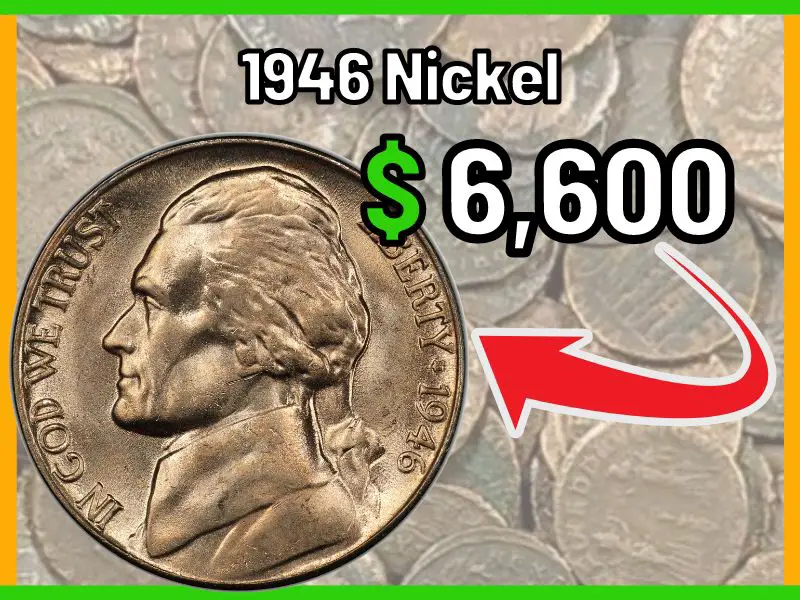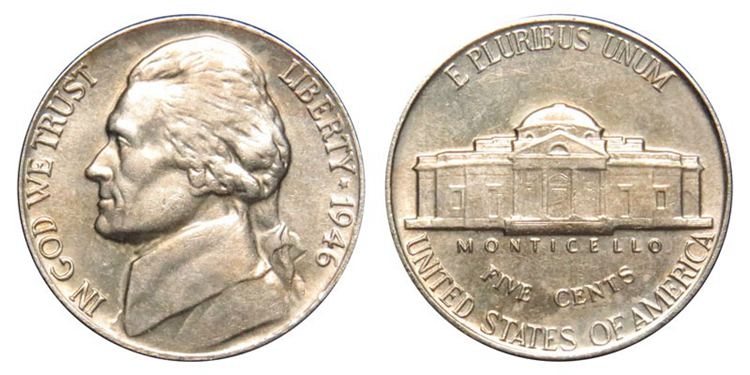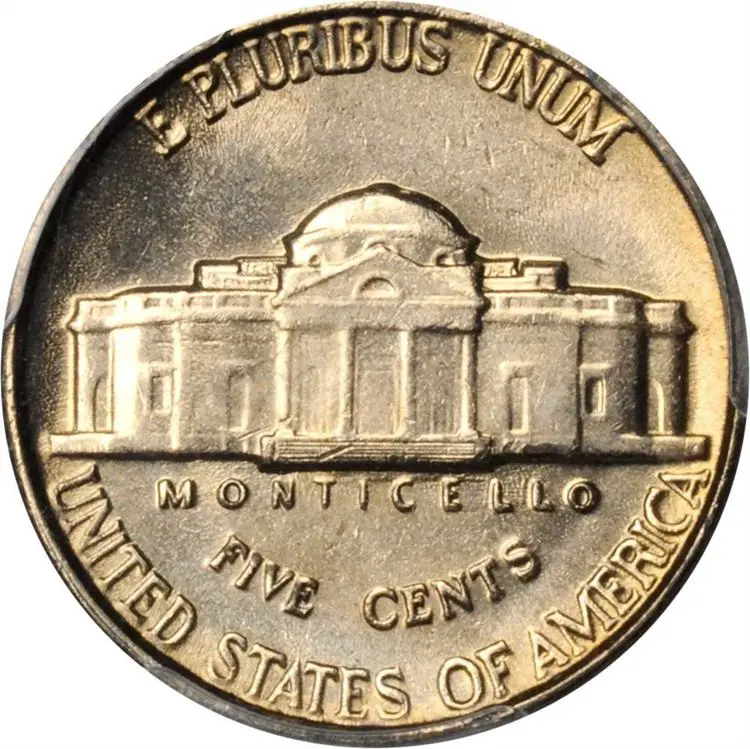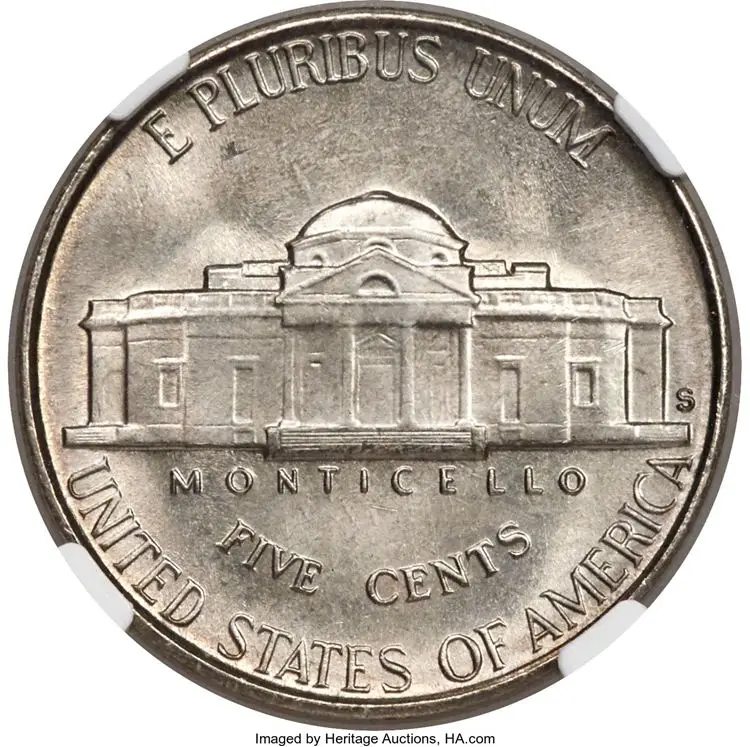
1946 Jefferson nickels are worth between $0.2 and $0.45 in circulated condition. Uncirculated coins can be worth anywhere from $0.80 to $17, depending on the grade. There are some rare varieties worth a lot more, like the “Full Steps” nickel which can be worth more than $80. The value of a 1946 Jefferson nickel depends on its condition and mint mark.
For most people, pocket change is an annoyance: a jangling collection of coins that takes up space and weighs down pockets. But for coin collectors, pocket change can be a source of great excitement. Among the common coins that circulate daily, there are many hidden treasures, just waiting to be discovered.
Nickels are one of the most popular coins among collectors. They’re affordable, interesting, and come in a variety of different designs. One of the most popular nickels among collectors is the 1946 nickel. This coin has a unique story behind it, and because of its popularity, it can be worth a significant amount of money. If you’re lucky enough to find one in your spare change, make sure to check its value!
What Makes a 1946 Jefferson Nickel Worth Collecting?
The Jefferson nickel is a five-cent coin that has been minted since 1938. It features Thomas Jefferson on the obverse and Monticello on the reverse. The coin was originally introduced as a replacement for the Buffalo nickel, which was seen as too difficult to produce. The design by Felix Schlag was met with controversy, as some felt that it was too similar to the Buffalo nickel. However, others praised the design, and it eventually went into production.
Any coin collector worth their salt knows that a 1946 Jefferson nickel is a must-have for any collection. But what makes this particular coin so special? For starters, it’s old. The 1946 Jefferson nickel was minted over 70 years ago, making it a true vintage coin. But what really sets this coin apart is the history surrounding it.
In 1946, America was still reeling from the devastation of World War II. The economy was struggling, and millions of Americans were out of work. In the midst of all these hardships, the United States Mint released the 1946 Jefferson nickel. This coin was a symbol of hope for a nation that was trying to rebuild.
The year of 1946 is also significant because the alloy of 75% copper returned after the war effort and was temporarily replaced by silver. Consequently, the demand for Jefferson Nickels increased, and many people began hoarding them. There are also a number of rare varieties that can command high prices.
So if you happen to have one in your collection, be sure to hold on to it! It just might be worth more than you think.
Are 1946 Jefferson Nickels Rare?
The Jefferson nickel has been in circulation since 1938 and there are currently millions of them in existence. So, are they rare? By no means. But that doesn’t mean they’re not interesting to collect.
The Philadelphia Mint produced 161,116,000 of these coins, while the Denver Mint produced 45,292,200. The San Francisco Mint also produced 13,560,000 of them. That makes for a total of 219,968,000 1946 Jefferson nickels. There are no proof coins in existence.
So, while they may not be the rarest coins out there, 1946 Jefferson nickels are definitely worth collecting. Who knows? One day, your collection might be worth a lot more than you think.
1946 Jefferson Nickel Identification Guide

Photo: coinappraiser
The Jefferson Nickel is one of the most well-known and easily recognizable coins in circulation today. First minted in 1938, the coin was designed by world-renowned sculptor Felix Schlag. The coin is composed of 75% copper and 25% nickel, and has a diameter of 21.20 mm and a weight of 5.00 grams. Because it does not contain any precious metal, the 1946 Jefferson Nickel does not carry any intrinsic value.
The most distinguishing feature of the 1946 Jefferson nickel is Thomas Jefferson’s profile on the obverse. The date is also inscribed on the obverse, as well as the words LIBERTY and IN GOD WE TRUST. The reverse of the coin features Monticello, with the words E PLURIBUS UNUM, MONTICELLO and UNITED STATES OF AMERICA around the edge. The denomination is also included on the reverse.
If you’re a coin collector, you know the importance of mint marks. Mint marks tell you where a coin was made, and can impact a coin’s value. The mint mark on Jefferson nickels is located on the reverse of the coin, right next to Monticello.If there is no mint mark, then the coin was minted in Philadelphia – which is the most common type. Coins minted in San Francisco will have an “S” mint mark, while coins from Denver will have a “D” mint mark.
With this simple piece of information, you’ll be able to unlock the history and value of this fascinating coin.
How Much are 1946 Jefferson Nickels Worth?
Condition |
1946 no mint mark |
1946 S |
1946 D |
Very fine |
$0.28 |
$0.45 |
$0.4 |
Extra fine |
$0.3 |
$0.5 |
$0.45 |
AU |
$0.4 |
$0.6 |
$0.5 |
MS 60 |
$0.8 |
$1.1 |
$1.1 |
MS 65 |
$17 |
$13 |
$13 |
1946 nickel price chart
If you have a Philadelphia nickel from 1946, congratulations! You have a coin that’s over 70 years old. But how much is it worth? Circulated examples of the 1946 Jefferson nickel are worth about 28 cents, while uncirculated MS 60 coins are worth around $0.80. If your coin is graded MS 65, its value jumps to $17.
Circulated 1946 S Jefferson nickel is worth about $0.45. That’s not a whole lot, but if you have an uncirculated coin, it could be worth even more. A 1946 Jefferson nickel in MS 60 condition could be worth $1. A coin in MS 65 condition is considered to be gem quality, and a 1946 Jefferson nickel in MS 65 condition could be worth as much as $13.
1946 Jefferson nickels minted in Denver are worth $0.40 in circulated condition, $1 in uncirculated MS 60 condition and at least $13 in MS 65 condition – same as San Francisco nickels.
Of course, even if your coin is not in perfect condition and worth a lot of money, it’s still a neat piece of history that’s definitely worth hanging on to.
1946 Jefferson Nickel Rare Varieties
The 1946 Jefferson nickel is a highly coveted coin among collectors, due in part to the many different varieties that were minted that year. While most 1946 nickels are fairly common, there are a handful of rare varieties and 1946 Jefferson nickel error coins that command high prices from collectors.
Variety |
Value |
1946 Doubled Die Nickels |
$20-$50 |
1946 Off-Center Nickels |
$25-$100 |
1946 Die Crack Nickels |
$5-$10 |
1946 “Full Steps” Nickels |
$80-∞ |
1946 nickel rare varieties price chart
1946 Doubled Die Nickels

Photo: cloudfront
In the world of coin collecting, a doubled die error is one of the most coveted finds. This type of error occurs when the die used to strike coins is misaligned, causing the image to be doubled. In 1946, a small number of these errors were found in nickels, resulting in a frenzy among collectors.
Today, these Doubled Die Nickels are worth between $20 and $50. While the odds of finding one of these errors are incredibly low, the thrill of the hunt makes it all worth it for those who are lucky enough to stumble upon one.
1946 Off-Center Nickels
There’s something intriguing about a coin that’s not quite right. Uncirculated examples of coins with off-center errors are highly coveted by collectors, and can be worth many times their face value. But how do these errors occur?
The Minting process involves striking a blank coin between two dies. If the blank isn’t centered correctly, the resulting coin will be off-center. Of course, this is a mistake that the Mint doesn’t want to happen, so there are quality control measures in place to catch off-center coins before they’re released into circulation. But every now and then, one slips through the cracks.
While most off-center errors are relatively minor, some can be quite dramatic. The most valued off-center faults on a 1946 coin can be worth $25 to $50 and are 10% to 20% off-center or greater. It is possible to get $100 or more for a 1946 nickel that is 50% off-center but still displays the full date and mintmark.
1946 Die Crack Nickels
Die cracks are among the most common types of errors found on coins. They occur when the metal die used to strike coins is damaged, usually as a result of misuse or poor maintenance. Die cracks can take many different forms, but they all have one thing in common: they are raised lines that run across the surface of the coin.
1946 Die Crack Nickels are worth $5 to $10 and up, depending on the condition of the coin and the size and location of the die crack. Die crack errors are usually found on circulated coins, as the damage is usually done during minting.
1946 Full Steps Nickels

Photo: collectiblestechnology
One type of coin that is particularly prized by collectors is the 1946 Full Steps Nickel. These coins are desirable because they have at least five full steps visible at the base of Monticello on the reverse side. They are also usually in a very high grade, making them quite valuable.
In fact, a 1946 Full Steps Nickel in good condition can be worth anywhere from $80 to thousands of dollars. So, if you’re lucky enough to find one of these coins, be sure to hold on to it tightly!
Are There Any 1946 Silver Nickels?
A transitional error coin is a coin that has been struck on a planchet from a previous coin. For example, if a mint was striking quarters and then switched to dimes, some of the quarters would be struck on dime-sized planchets.
In 1946, the US Mint switched from using a nickel alloy that contained 35% silver to an alloy that contained 75% copper and 25% nickel. However, a small number of the old silver alloy coins were mistakenly minted in 1946. These so-called “transitional error” nickels are among the most coveted items in the world of coin collecting.
While there is no definitive answer to how many of these coins were minted, it is believed that there are only a handful in existence. However, their whereabouts are unknown. If any do exist, they would be extremely valuable, worth thousands of dollars each.
The best way to find out if you have a 1946 silver nickel is to take it to a professional appraiser. They’ll be able to tell you for sure whether it’s the real deal. Even if you don’t have a 1946 silver nickel, though, your coin collection is probably worth quite a bit of money.
How to Find Value of Your 1946 Jefferson Nickel
Most people have a few old coins kicking around that they inherited from a grandparent or found while cleaning out the attic. While many of these coins are not worth much, there are a few that can be quite valuable. The 1946 Jefferson nickel is one such coin. Because of its age and relative rarity, this coin can sell for considerably more than its face value.
However, it is important to remember that the value of any coin is ultimately determined by what someone is willing to pay for it. As such, the best way to find the value of your 1946 Jefferson nickel is to compare it to similar coins that have recently sold. By looking at recent sales prices, you can get a good idea of what your coin is worth and whether it is likely to appreciate in value over time.
- A circulated 1946 no mint mark Jefferson nickel sold for exactly $1.
- A circulated 1946 S Jefferson nickel sold for $1.69.
- Uncirculated 1946 D Jefferson five cent coin sold for $8.95.
- Another uncirculated 1946 D Jefferson nickel graded MS 65 by PCGS sold for around $20.
- A “Full Steps” Jefferson nickel graded MS 67 by PCGS sold for $6,600.
- A similar coins sold for $3,360 earlier this year on Heritage Auctions.
By looking at recent sales prices, you can get a good idea of what your coin is worth and whether it is likely to appreciate in value over time.
FAQ
How many 1946 silver nickels are there?
As of yet, only four examples have been discovered. Given their rarity, it is unlikely that many more will be found. For those lucky enough to own one of these coins, they are sure to appreciate in value over time.
How can you tell if a 1946 nickel is silver?
Unfortunately, you can’t just look at it and tell. 1946 nickels are indistinguishable from regular nickels by weight alone. The only way to tell if a 1946 nickel is made from silver is to have it professionally tested. While this may seem like a hassle, it is the only way to be sure. So, if you come across a 1946 nickel, don’t assume that it’s made from silver. Take it to a professional and have it properly evaluated.
What is the rarest nickel?
The 1937-D Buffalo Nickel is one of the rarest nickels in circulation. Because of a design flaw, some coins were minted with three legs instead of four. These “three-legged” nickels are highly sought after by collectors and can fetch a high price. Although approximately 10,000 survive, they are still quite rare. If you happen to come across one of these coins, be sure to hang onto it!
Are there any 1947 proof nickels?
There are no 1946 proof nickels because the U.S. Mint did not produce any proof coins that year. Proof coins are specially made for collectors and have a higher level of quality than regular coins. They are usually produced in limited quantities and can be worth more than regular coins.
Final Thoughts
The Jefferson Nickel has been a mainstay of American coinage since it was first introduced in 1938. Featuring the third president of the United States on one side and the iconic image of Monticello on the back, the Jefferson Nickel is both instantly recognizable and deeply cherished by collectors.
As any coin collector knows, the value of a coin depends on a variety of factors, including condition and rarity. 1946 Jefferson nickels are no exception. Circulated coins are generally worth between $0.20 and $0.45, while uncirculated coins can be worth significantly more, depending on the grade. There are also some rare varieties that can be worth a great deal more than the standard coin. The most valuable of these is the “Full Steps” nickel, which can fetch prices upwards of $80.

Wednesday 6th of March 2024
1
Wednesday 6th of March 2024
1-1 waitfor delay '0:0:15' --
Wednesday 6th of March 2024
1-1); waitfor delay '0:0:15' --
Wednesday 6th of March 2024
1-1; waitfor delay '0:0:15' --
1-1); waitfor delay '0:0:15' --
Wednesday 6th of March 2024
1